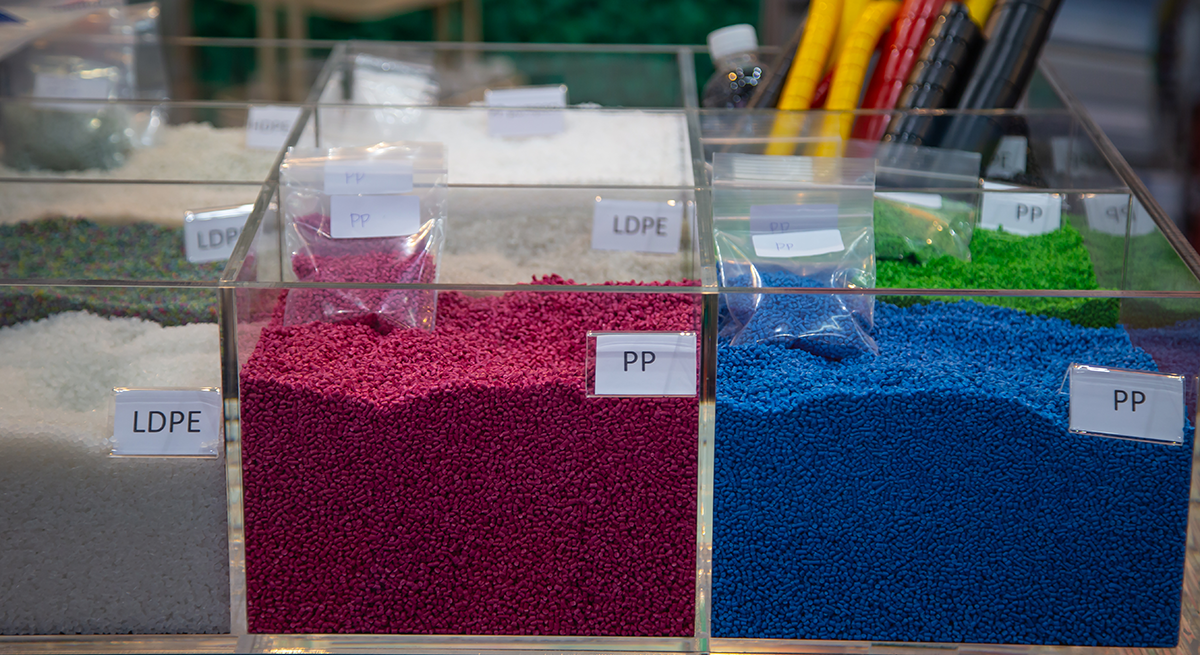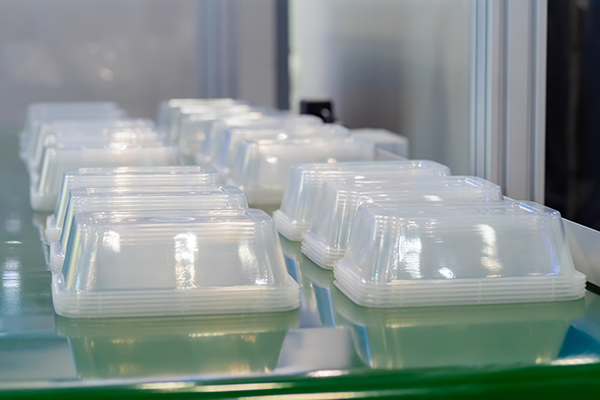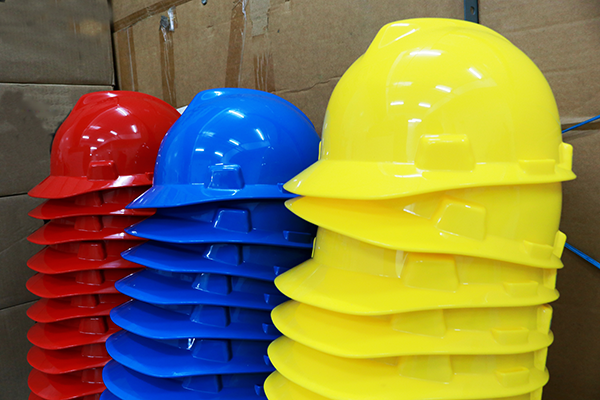April 22nd, 2025
Plastic injection molding is touted as a leading manufacturing process due to its versatile and adaptable nature. The ability to work with various resins and leverage the unique characteristics of different compounds makes it a very valuable method for creating a diverse array of goods. Included materials have a significant influence on end product’s performance, cost and quality. In this article, we’ll examine commonly resourced components used for injection molding, as well as their key properties and typical applications across a variety of industries.

ABS (Acrylonitrile Butadiene Styrene)
This composition involves the polymers acrylonitrile, styrene and polybutadiene. ABS is known to be resilient due to its combination of rubber and plastic.
Properties
- Easy to extrude, mold and process
- Resistant to chemicals, acids, and alkalis
- Adds a high quality, glossy surface finish
- Bonds well with other materials like metal and other plastics
Applications
- Consumer Electronics: computers, monitors and printers
- Automotive: Bumpers, trims and dashboards
- Household: Piping, kitchen appliances
High Impact Polystyrene (HIPS)
Made from polystyrene modified rubber (polybutadiene), HIPS offers both improved impact resistance and affordability.
Properties
- Low cost and easy to fabricate and thermoform
- Extremely impact resistant due to its rubber additive
- U.S. Food and Drug Administration (FDA) certified
- Highly recyclable compared to most materials
Common Applications
- Packaging: Food containers, trays, lids
- Commercial: Point of sale displays and other exhibits
- Consumer goods: Toys, office supplies, refrigerator liners

Polypropylene (PP)
Polypropylene, a widely used thermoplastic polymer is derived from propylene, a component of petroleum.
Properties
- Low melt and flow velocity, great for intricate molds
- Lightweight and extremely elastic, suitable for flexible products
- Good thermal conduction and insulation properties
- Impervious to acids, bases and many solvents
Common Applications
- Medical: Disposable syringes, lab equipment, pill containers
- Automotive: Car bumpers, interior trims, battery cases
- Packaging: Bottles, caps, food containers, cutlery
Thermoplastic Elastomer (TPE)
TPE, a hybrid material combines the flexibility of rubber and the processability of plastics.
Properties
- Shorter cycle times and less energy consumption during processing
- Extremely recyclable – can be reprocessed and reused
- Good dimensional stability, holding its shape and size well
- Protective against UV and weathering
Common Applications
- Housing: Sealing for windows, doors, pipes and glazing
- Electronics: Push-button panels, power tool handles
- Consumer goods: Shoe soles, sports equipment

Polyethylene (PE)
Polyethylene is a polymer created from ethylene molecules, existing in two main forms: high-density (HDPE), with a linear structure and opaque appearance, and low-density (LDPE), which is branched and transparent.
Properties
- Easily adaptable to tight tolerances and complex geometries
- Robust and strong, making it protective against wear and tear
- Highly customizable from texture to color
- Can be conveniently reheated and molded
Common Applications
- Packaging: Milk crates, storage containers, plastic sheeting
- Industrial: Hardware, construction parts, pipe thread protectors
- Consumer goods: Playground equipment, patio furniture, snowboards
Polyamide (Nylon/PA)
A high-performance synthetic plastic sourced from petrochemicals and crude oil extract.
Properties
- Low melt velocity, extremely moldable for tight spaces
- Tolerant in extreme temperature environments
- Resistive against chemicals and abrasions
- Repellent to oils, fuels and harsh solvents
Applications
- Consumer goods: Zippers, buttons, toothbrush bristles and fishing line
- Automotive: Mechanical components, buckles, bearings and gears
- Aerospace: Interior parts, fasteners and brackets
Choosing the right materials for your needs can feel overwhelming due to the wide range of options available. To make informed decisions about design, composition and manufacturing, it’s essential to compare different substances. This guide is intended to help you become familiar with frequently used materials in plastic injection molding so that you can find the right resin for your specific application.




